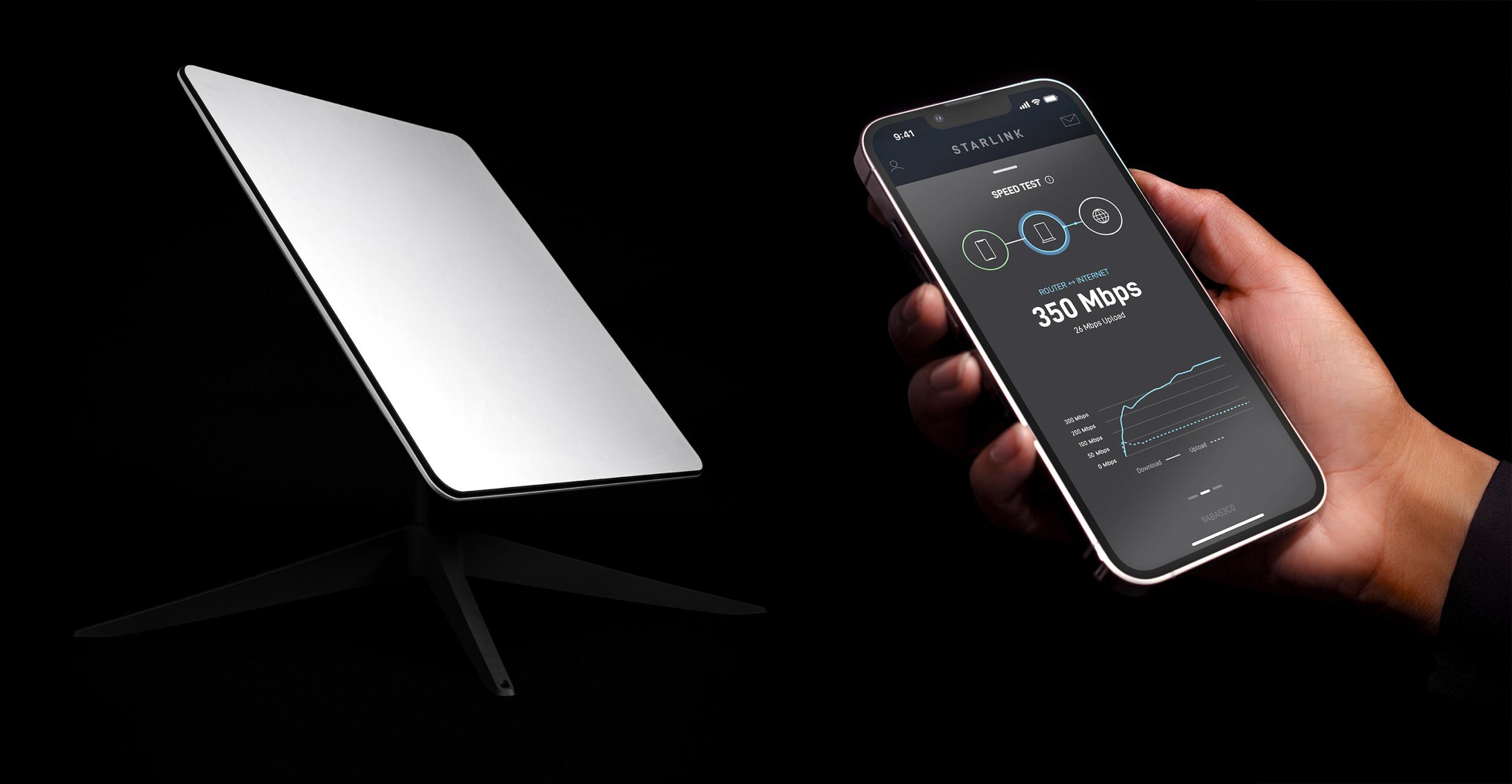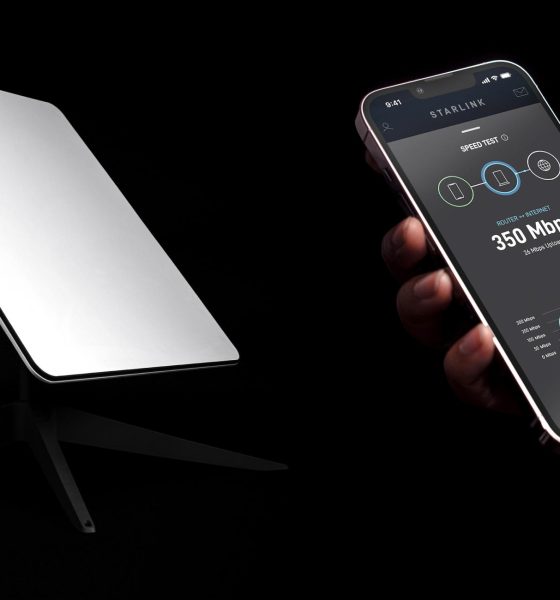

News
Elon Musk calls out Dish Network’s Charlie Ergen for trying to steal the 12 GHz band that is meant for space internet
Tesla and SpaceX CEO, Elon Musk called out Dish Network’s Charlie Ergen for the company’s attempt to block Starlink from using the 12 GHz band. Earlier this month, the FCC granted SpaceX’s request to use the 12 GHz band for Earth Stations in Motions which will allow it to provide Starlink internet service to moving vehicles, boats, and aircraft.
Dish Network Is Trying To Convince The FCC To Deny Starlink the 12 GHz band
DISH Network has been trying to convince the Federal Communications Commission (FCC) to deny SpaceX and Starlink the needed status in the 12 GHz band.
Although Dish is only a satellite television provider, it is building a 5G mobile broadband network that might use spectrum from the 12 GHz band that it uses for its satellite TV services.
OneWeb Stands Up For SpaceX
Earlier today, Drive Tesla Canda reported that OneWeb is supporting SpaceX in the fight over the 12 GHz spectrum.
The company sent a filing to the FCC urging it to reject the plan to open up the 12 GHz band for ground-based 5G. OneWeb said,
“This OneWeb study clearly illustrates that [satellite internet] operators would not be able to deploy user terminals in the proximity of a typical urban or suburban macro-cell base station deployment without receiving harmful interference… The MVDSS (12GHz for 5G) proponents have no history of building out real networks and instead are focused on lobbying the Commission for an unparalleled spectrum windfall based on deeply flawed technical studies without any corresponding benefit to unconnected Americans.”
Dish Network Claims SpaceX Is Spreading Misinformation
According to Dish Network, the study released by OneWeb is “another in-house, non-independent effort to discredit the scientifically proven feasibility of coexistence in the 12 GHz band.” According to Dish Network:
“The study released today by OneWeb is another in-house, non-independent effort to discredit the scientifically proven feasibility of coexistence in the 12 GHz band. It is important to note that the FCC has already made it clear that any NGSO FSS company utilizing the 12 GHz band is doing so at its own risk and there should be no expectation of exclusivity within the band. The 5G for 12GHz Coalition remains committed to working with the FCC and stakeholders to reach a win-win solution for the American people. We will continue to pursue the facts that prove coexistence is possible in the band and advance the public interest.”
In the 5G for 12 GZ Coalition, Dish Network accused SpaceX of spreading misinformation.
“Starlink has initiated a public misinformation campaign by falsely telling customers and the public that coexistence is not possible in the band among Starlink and 5G services – despite nationwide data proving otherwise. This tactic, which is commonly used by Elon Musk, is not only disingenuous, but it promulgates an anti-5G narrative that is harmful to American consumers who deserve greater competition, connectivity options, and innovation. It also stands to threaten America’s global leadership in the 5G and technology sector as other countries outpace the nation in delivering next-generation services.”
Elon Musk Speaks Out Against Charlie Ergen.
In a response to Drive Tesla Canada’s article, Elon Musk said that Charlie Ergen is trying to steal the 12 GHz band meant for space internet. He added that this isn’t cool. Ergen is the co-founder and chairman of Dish Network.
SpaceX Petition To The FCC
SpaceX has set up a petition requestion the FCC to reject the rule changes proposed by Dish for the 12 GHz spectrum. If the FCC doesn’t reject these rules, Starlink customers will experience interference for more than. 77% of the time. And total outages of services for 74% of the time. This would make Starlink, a service that is critical for disaster relief, unusable for most Americans.
You can sign the petition here.
Starlink Helps During Disasters.
We all know about how Starlink is helping in Ukraine. However, Starlink helped people in Louisiana after hurricane Ide blew through knocking out communications and power. I spoke with Elon Musk about this in my interview and I am going to end this article with what he said about Starlink.
“Starlink, because it is not dependent on any ground-based infrastructure, can provide internet connectivity to areas that have had floods or fires or earthquakes that t have destroyed the ground-based infrastructure.”
“That’s obviously extremely helpful for rescuing people and people being able to ‘I need to I need help. I need rescue.’ It’s like how do you find them? How do you communicate with them? Starlink can and has provided that in a number of situations.”

Elon Musk
Elon Musk and Tesla AI Director share insights after empty driver seat Robotaxi rides
The executives’ unoccupied tests hint at the rapid progress of Tesla’s unsupervised Robotaxi efforts.

Tesla CEO Elon Musk and AI Director Ashok Elluswamy celebrated Christmas Eve by sharing personal experiences with Robotaxi vehicles that had no safety monitor or occupant in the driver’s seat. Musk described the system’s “perfect driving” around Austin, while Elluswamy posted video from the back seat, calling it “an amazing experience.”
The executives’ unoccupied tests hint at the rapid progress of Tesla’s unsupervised Robotaxi efforts.
Elon and Ashok’s firsthand Robotaxi insights
Prior to Musk and the Tesla AI Director’s posts, sightings of unmanned Teslas navigating public roads were widely shared on social media. One such vehicle was spotted in Austin, Texas, which Elon Musk acknowleged by stating that “Testing is underway with no occupants in the car.”
Based on his Christmas Eve post, Musk seemed to have tested an unmanned Tesla himself. “A Tesla with no safety monitor in the car and me sitting in the passenger seat took me all around Austin on Sunday with perfect driving,” Musk wrote in his post.
Elluswamy responded with a 2-minute video showing himself in the rear of an unmanned Tesla. The video featured the vehicle’s empty front seats, as well as its smooth handling through real-world traffic. He captioned his video with the words, “It’s an amazing experience!”
Towards Unsupervised operations
During an xAI Hackathon earlier this month, Elon Musk mentioned that Tesla owed be removing Safety Monitors from its Robotaxis in Austin in just three weeks. “Unsupervised is pretty much solved at this point. So there will be Tesla Robotaxis operating in Austin with no one in them. Not even anyone in the passenger seat in about three weeks,” he said. Musk echoed similar estimates at the 2025 Annual Shareholder Meeting and the Q3 2025 earnings call.
Considering the insights that were posted Musk and Elluswamy, it does appear that Tesla is working hard towards operating its Robotaxis with no safety monitors. This is quite impressive considering that the service was launched just earlier this year.
Elon Musk
Starlink passes 9 million active customers just weeks after hitting 8 million
The milestone highlights the accelerating growth of Starlink, which has now been adding over 20,000 new users per day.

SpaceX’s Starlink satellite internet service has continued its rapid global expansion, surpassing 9 million active customers just weeks after crossing the 8 million mark.
The milestone highlights the accelerating growth of Starlink, which has now been adding over 20,000 new users per day.
9 million customers
In a post on X, SpaceX stated that Starlink now serves over 9 million active users across 155 countries, territories, and markets. The company reached 8 million customers in early November, meaning it added roughly 1 million subscribers in under seven weeks, or about 21,275 new users on average per day.
“Starlink is connecting more than 9M active customers with high-speed internet across 155 countries, territories, and many other markets,” Starlink wrote in a post on its official X account. SpaceX President Gwynne Shotwell also celebrated the milestone on X. “A huge thank you to all of our customers and congrats to the Starlink team for such an incredible product,” she wrote.
That growth rate reflects both rising demand for broadband in underserved regions and Starlink’s expanding satellite constellation, which now includes more than 9,000 low-Earth-orbit satellites designed to deliver high-speed, low-latency internet worldwide.
Starlink’s momentum
Starlink’s momentum has been building up. SpaceX reported 4.6 million Starlink customers in December 2024, followed by 7 million by August 2025, and 8 million customers in November. Independent data also suggests Starlink usage is rising sharply, with Cloudflare reporting that global web traffic from Starlink users more than doubled in 2025, as noted in an Insider report.
Starlink’s momentum is increasingly tied to SpaceX’s broader financial outlook. Elon Musk has said the satellite network is “by far” the company’s largest revenue driver, and reports suggest SpaceX may be positioning itself for an initial public offering as soon as next year, with valuations estimated as high as $1.5 trillion. Musk has also suggested in the past that Starlink could have its own IPO in the future.
News
NVIDIA Director of Robotics: Tesla FSD v14 is the first AI to pass the “Physical Turing Test”
After testing FSD v14, Fan stated that his experience with FSD felt magical at first, but it soon started to feel like a routine.

NVIDIA Director of Robotics Jim Fan has praised Tesla’s Full Self-Driving (Supervised) v14 as the first AI to pass what he described as a “Physical Turing Test.”
After testing FSD v14, Fan stated that his experience with FSD felt magical at first, but it soon started to feel like a routine. And just like smartphones today, removing it now would “actively hurt.”
Jim Fan’s hands-on FSD v14 impressions
Fan, a leading researcher in embodied AI who is currently solving Physical AI at NVIDIA and spearheading the company’s Project GR00T initiative, noted that he actually was late to the Tesla game. He was, however, one of the first to try out FSD v14.
“I was very late to own a Tesla but among the earliest to try out FSD v14. It’s perhaps the first time I experience an AI that passes the Physical Turing Test: after a long day at work, you press a button, lay back, and couldn’t tell if a neural net or a human drove you home,” Fan wrote in a post on X.
Fan added: “Despite knowing exactly how robot learning works, I still find it magical watching the steering wheel turn by itself. First it feels surreal, next it becomes routine. Then, like the smartphone, taking it away actively hurts. This is how humanity gets rewired and glued to god-like technologies.”
The Physical Turing Test
The original Turing Test was conceived by Alan Turing in 1950, and it was aimed at determining if a machine could exhibit behavior that is equivalent to or indistinguishable from a human. By focusing on text-based conversations, the original Turing Test set a high bar for natural language processing and machine learning.
This test has been passed by today’s large language models. However, the capability to converse in a humanlike manner is a completely different challenge from performing real-world problem-solving or physical interactions. Thus, Fan introduced the Physical Turing Test, which challenges AI systems to demonstrate intelligence through physical actions.
Based on Fan’s comments, Tesla has demonstrated these intelligent physical actions with FSD v14. Elon Musk agreed with the NVIDIA executive, stating in a post on X that with FSD v14, “you can sense the sentience maturing.” Musk also praised Tesla AI, calling it the best “real-world AI” today.








